


Chess News



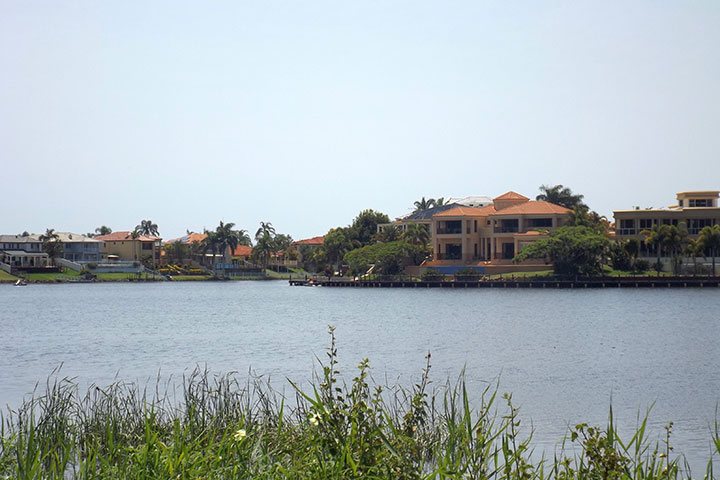
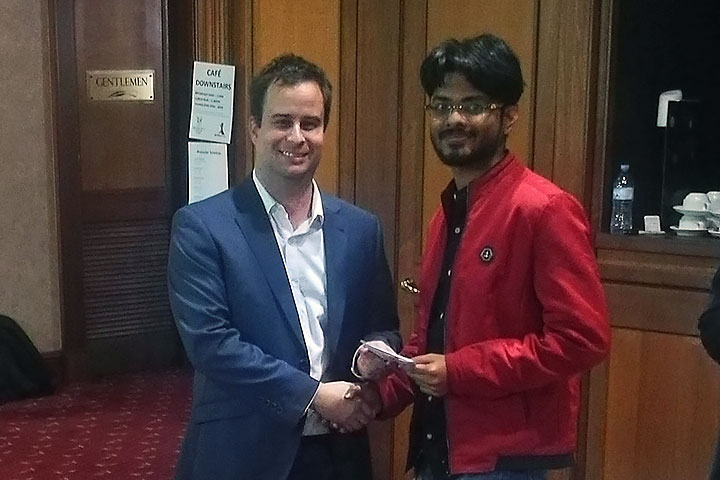

ChessBase 17 - Mega package - Edition 2024
It is the program of choice for anyone who loves the game and wants to know more about it. Start your personal success story with ChessBase and enjoy the game even more.
The Gold Coast is a metropolitan region south of Brisbane on Australia’s east coast known for long sandy beaches, surfing, an elaborate system of inland canals and waterways, and theme parks. Inland, there are hiking trails which crisscross Lamington National Park’s mountain ridges and valleys, home to rare birds and rainforest.
One of the recent challenges of modernity has been to preserve the ideal balance between urbanization and wildlife. Australia, and more particularly the City of Gold Coast have kept up this balance admirably. "Q1", a residential tower that is the tallest skyscraper in the Southern Hemisphere, is flanked by lush green trees, public parks all around, and quite a few beaches, including the spectacular sea resort, Surfers Paradise.
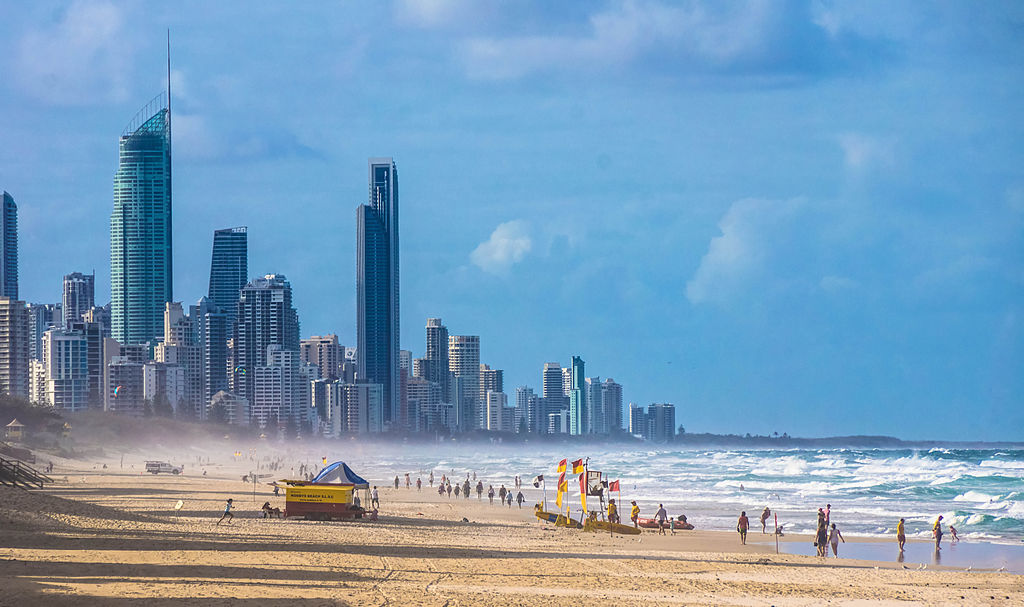
Surfers Paradise with Q1 tower defining the skyline | Photo: Petra [CC BY 2.0], via Wikimedia Commons
Gardiner Chess, the company that organized Gold Coast Chess Open, was founded by Graeme & Wendy Gardiner in 2001. Pretty soon, an enterprising team was built up, and the local eco-system (children, schools, coaches etc.) became established. After the Gardiner’s retirement in December 2015, the company was taken over by the able duo of Andrew FitzPatrick and Justine Jule who had been involved with the business for a number of years prior.
Gardiner Chess aims to foster a love of chess in children and in so doing help them reap the benefits educationally and psychologically in a world that is getting increasingly complex. They believe that well-documented research shows that chess can have a significant impact on the improvement of children in several areas, especially cognitive skills and thinking patterns.
The wise schools of the Queensland region, and Australia in general have embraced the scientifically backed findings and the concept of chess being taught to children in schools. As such, Australia has a thriving scholastic chess scene. Gardiner Chess is the biggest of such chess teaching companies in Queensland, but there are quite a few such companies out there in Australia, and several schools that have chess as a part of the school system. The effects of a whole generation of kids learning chess in schools will be known in time. But it’s amazing how the enterprise, that started as a handful of people, has grown in less than a couple of decades, and such a model can be replicated anywhere in the world. It's a win-win.

A typical classroom — King’s Christian College] | Photo: Shaun Curtis
Aside from teaching, Gardiner Chess also does a number of events (in excess of 70 this year!), mainly aimed at the scholastic eco-system, with a number of weekenders added on. The events teams of Andrew FitzPatrick and Shaun Curtis provide high levels of expertise. Andrew looks after logistics whilst the efforts of Shaun Curtis – the event coordinator and the man who invited me to my first chess event in Australia cannot be underestimated in regard to networking and looking after players during events, as I can personally testify.
The Gold Coast Open has been running since 1993 and has established itself as one of the top events in the Australian chess calendar. This was the biggest so far, and their first norm event — with Teymur Kuybokarov getting his 3rd and final GM Norm from this tournament. The chess scene in Australia is still growing and Gardiner Chess is hoping to grow the game and in particular, the Gold Coast Open in future years with the goal of the event becoming the most sought-after destination event in Australia.

Andrew Fitzpatrick awards Temur Kuybokarov the Gold Coast trophy as Peter Tsai look on | Photo: Gardiner Chess
At the halfway, after 5 rounds, Anton was leading at 4.5/5. Temur was trailing by half point. The championship race between them was decided directly. It all came down to this game:
Temur was clearly the deserved winner of the tournament. The overall opposition he faced was quite strong, with most of his opposition above 2490. He defended quite confidently against me from a slightly worse position. He was worse against Timur Gareyev as well but showed resourcefulness to clinch the game.
Anton’s play was also quite strong overall. If not for 18.d5? against Kuybokarov, he would’ve probably ended up the winner. He also faced quite a decent opposition lineup and defeated the top seed, Timur Gareyev. He is clearly right up there among the best juniors but considers chess more as a hobby. While Australia has a thriving scholastic setup, the Australian government doesn’t consider chess as a sport, and therefore, at this moment, Australia is not a great place to pursue chess professionally. I do hope in the future that these governments take a cue from the International Olympic Committee, which classifies chess as a sport.
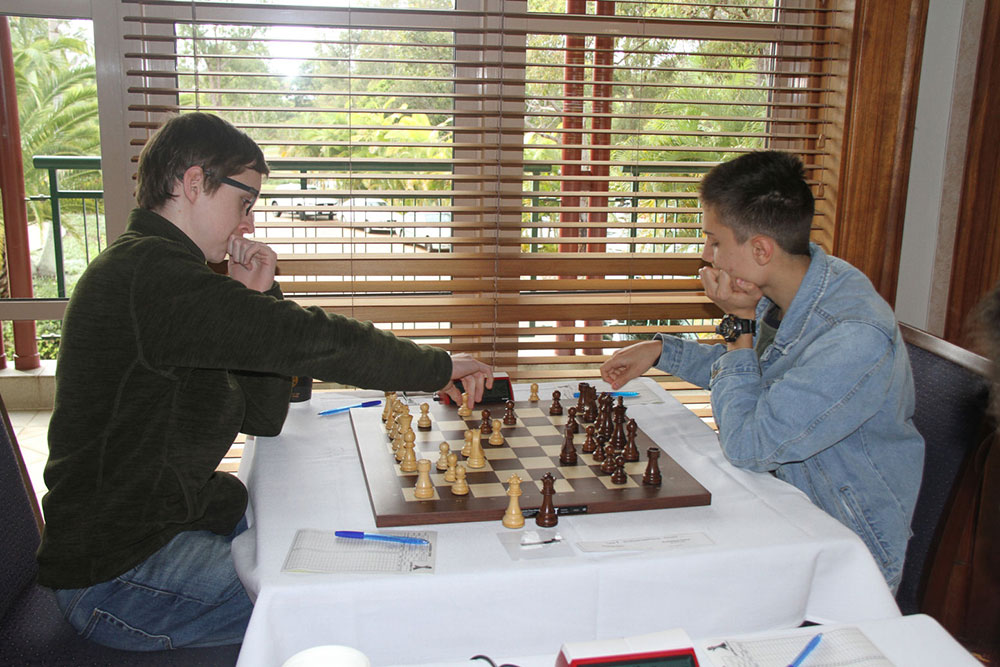
The game that pretty much decided the order of the first two places | Photo: Gardiner Chess
This was my first trip ever to Australia. The two rounds every day and the hectic schedule was something I wasn’t quite accustomed to. Aside from that, I was well aware of the local Aussie player’s reputation as under-rated fighters. Therefore I decided to tread quite cautiously from the beginning.
I was a bit sick over the initial two days. I made four draws within the first six rounds, but my play kept getting better and I regained quite a bit of my strength towards the end. I managed to score wins against Australia’s highest rated player GM Zhao Zong Yuan and IM Stephen Solomon in the 7th and 8th rounds, but by this time I was completely drained. Facing GM Anton Smirnov in the last round, with even a win not guaranteeing first place, I played a tame draw to end the tournament at joint third.
I was hosted by a lovely Chinese family in one of the lakefront posh neighbourhoods surrounding Clear Island Lake. I had a wonderful time in Gold Coast, and the organizers were lovely. When I had a visa crisis of sorts, they drove me all the way from Gold Coast to Queensland in the morning. I look forward to visiting this wonderful destination again. It’s a long way ahead, but with a sustained effort from a few good people, I am sure it’ll only be a matter of time before the Australian chess starts a self-sustaining assembly line of chess talents, like India has today.
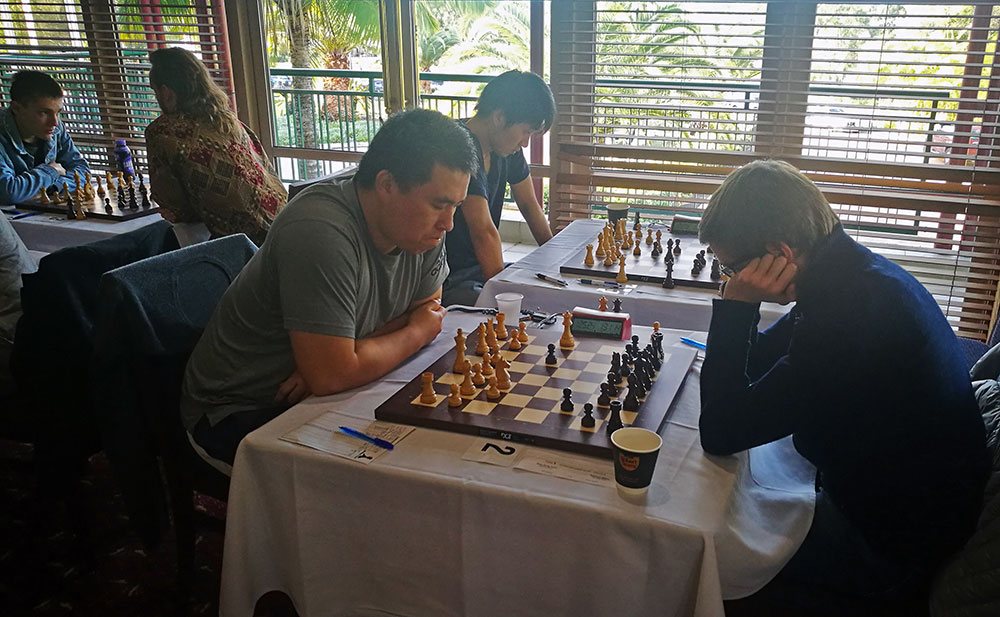
I decided to be cautious and respectful to certain players and my 18 move draw against IM Bobby Cheng was one such instance — he scored 6½/9 and tied for 3rd | Photo: Gardiner Chess